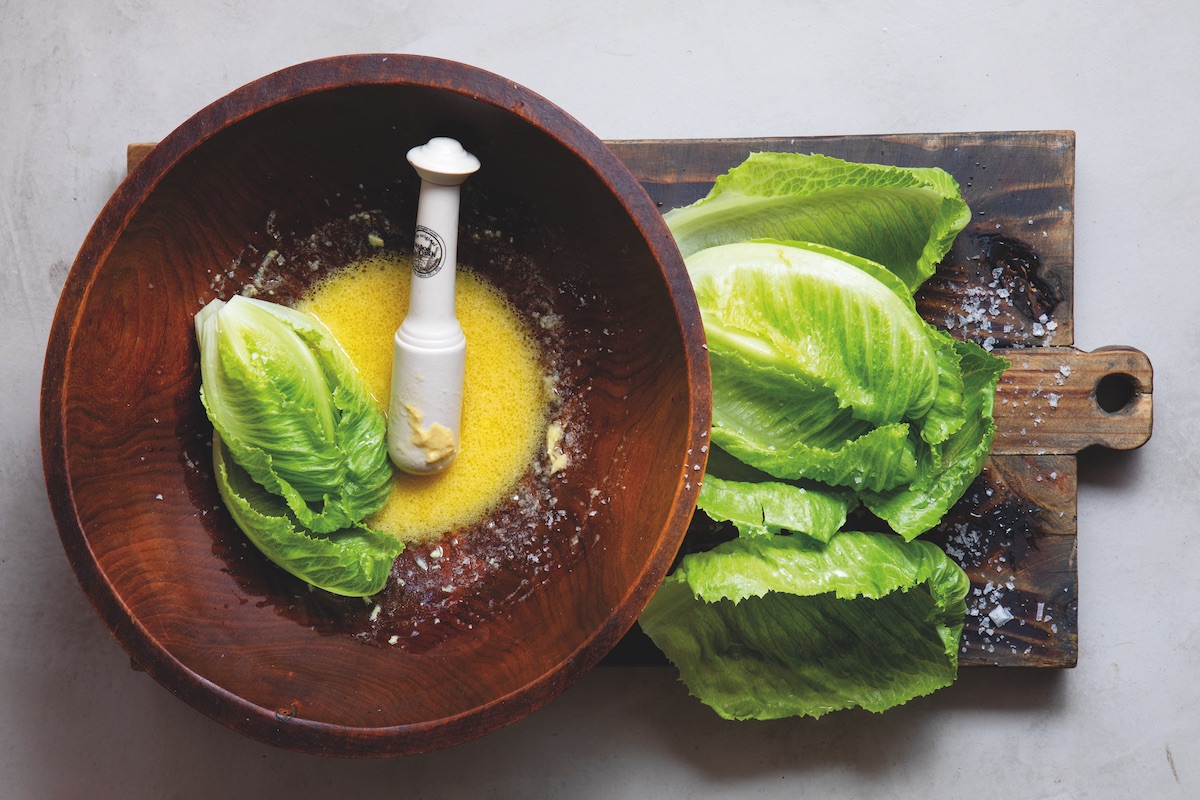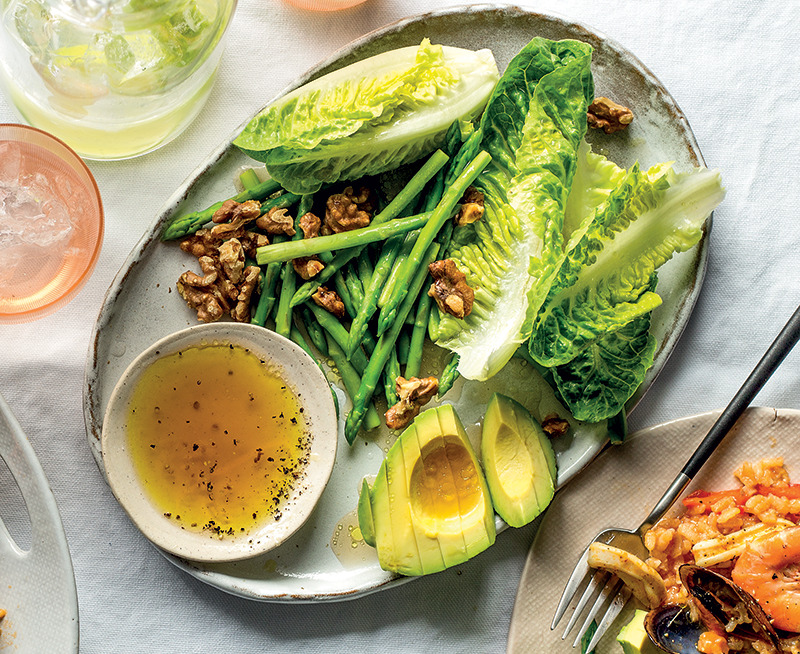Everything you need to know to build a better salad
The time of sad, soggy salads with sickly sweet dressings is over. As is the time of dry salads only a rabbit would want to eat. Making a great salad is easier than you think and we’re about to change your life with a few simple tips.
The base
Yes, the foundation of most salads is lettuce, which is fine, as long as you mix it up every now and then. Iceberg lettuce has a time and a place for something like a wedge salad, but otherwise, get creative with your leaves. Think about using butter lettuce, Romaine, cos or baby gem, or a combination of these. Baby spinach has a mild flavour but holds up well, as does kale, whether it’s cooked or raw. To add a bit more depth of flavour, rocket is also great for a delicate pepperiness, and soft herbs like parsley and mint also make for great bases. If you’re partial to bitterness, radicchio and endive are excellent scattered through more delicate leaves.
The dressing
Making a salad dressing might feel scary, but when you consider that you probably have all of the ingredients to hand, it’s a no-brainer to make your own. To make a good basic dressing, you’ll need the following:
- Olive oil
- Some kind of acid (this could be white or red wine vinegar, lemon juice or apple cider vinegar)
- An emulsifying agent, which could be mustard (such as wholegrain or Dijon) or very finely chopped garlic or shallots
- A sweet aspect to balance the acidity, such as a pinch of sugar or honey
- Seasoning
To make the dressing, place everything except the olive oil in a small bowl and whisk together. Then pour in the olive oil, very slowly, to emulsify the ingredients. Check the seasoning and acidity/sweetness and correct as required. The general ratio of dressings is 3:1 olive oil to acid, and a teaspoon or two of mustard should do the trick to bind everything. Most importantly, taste as you go and tweak depending on what you feel like. If you like a more mustardy dressing, go wild with the mustard. If you’d like a more lemon-leaning one, add more of that. There are no rules when it comes to the flavours, as long as you get your base right. Make a large batch of it to store in the fridge and you’ll never be tempted to use shop-bought again.
The textures
What separates a good salad from a great one? Interesting textures. Granted, if you’ve followed our advice on lettuces above, chances are you’ve already got some good texture on the go. Take it to the next level by playing with ingredients that will add varied weights to your salad. Roasted and chopped nuts are always a great place to start – and we don’t only mean pine nuts. If you’re feeling spendy, go for it, but in other cases, macadamia, walnuts and almonds are a perfect substitute. Cucumber is also great for crunch, as are celery and chopped apple or grilled broccoli. On the softer end of the spectrum, avo is an obvious choice, but you could also opt for soft feta, cottage cheese or even ricotta. While we’re on the subject of cheeses, remember that are options beyond a tub of feta. South Africans love putting feta in salads (and why not, it’s a tasty cheese) but when you’re trying to take your salad to new heights, it might be time to consider a new cheese. Shavings of Parmesan or any hard Italian-style cheese are a dream in salad, and scream of sophistication. If you’re a fan, blue cheese makes for an updated addition, as does a grilled (and cooled) halloumi.
Inspired? These are some of our favourite salads.
Classic green salad

Get the recipe for classic green salad here.
The cheeseboard salad

Get the recipe for the cheeseboard salad here.
Green salad with roast walnuts and avocado oil dressing

Get the recipe for green salad with roast walnuts and avocado oil dressing here.



Comments